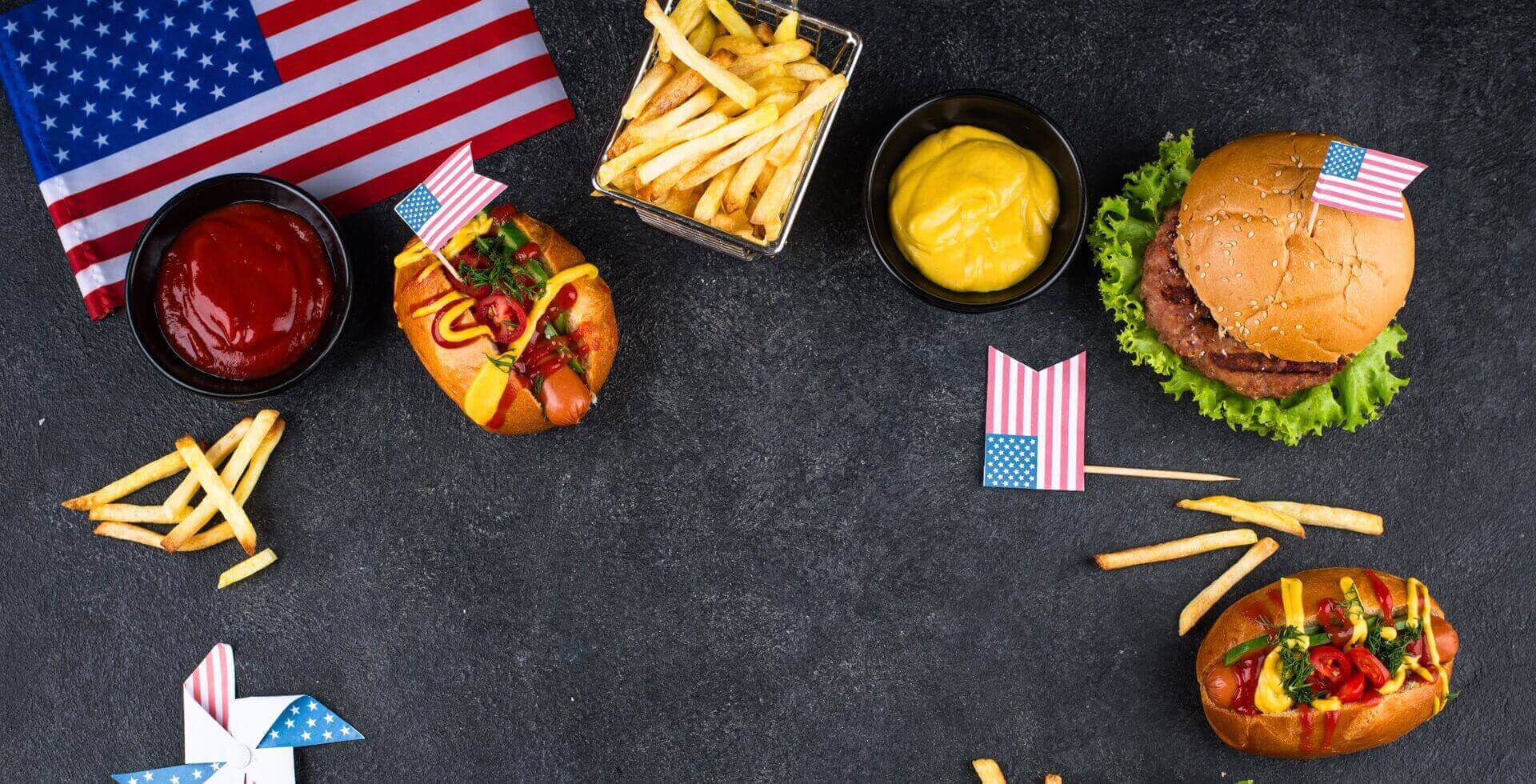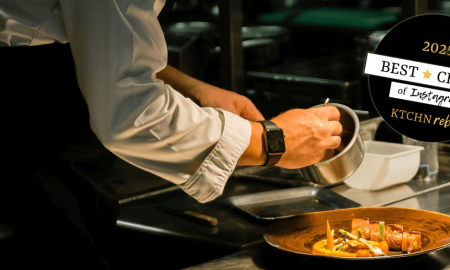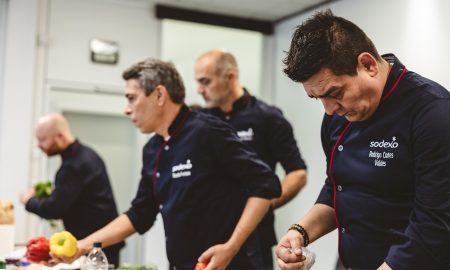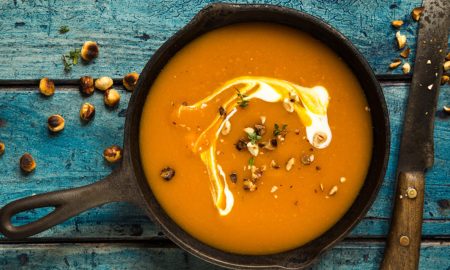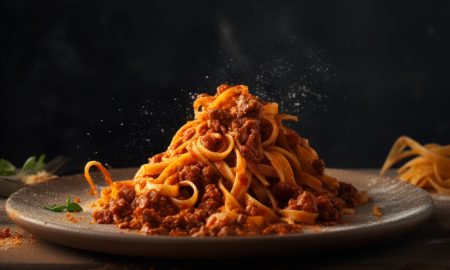Wouldn’t it be interesting if we could peek into the future of food? To find out how eating habits would change so that we could prepare accordingly? Renowned nutritionist Hanni Rützler and her Food Report come pretty close to doing just that. Every year, she serves up a wealth of information on up-and-coming culinary developments and concepts in the German-speaking world.
But what about food trends in the US? How relevant is sustainability in the land of infinite opportunity, and what impact do platforms like TikTok, Instagram, and Facebook have on American eating habits? Andrew Fordyce – self-proclaimed food service expert, food trend scout, and EATrepreneur – offers a few answers. The South African-born expert is familiar with the food scene on all five continents, and he’s always on the lookout for new trends and promising concepts. He told KTCHNrebel about the most important food trends in the US and explains how he identifies them.

Image: Alexander Heinrichs
A keen nose and a gut feeling for trends
“Trends develop through the interplay of societal needs, technological advances, cultural influences and economic conditions,” Andrew Fordyce explains. Extensive research, thirty years of industry experience, and trusting his gut are how he uncovers new developments in food and beverages. As a university lecturer, he also has access to a wide range of materials and studies. But what benefits him the most is his network. “For example, I’m in close contact with architects who often plan restaurants two to three years in advance. When you talk to them, you get a first impression of what food trends might be on the horizon.”
Platforms like TikTok, Instagram, and Facebook also influence people’s eating habits – or, more specifically, they influence how quickly trends spread. “In the past, it often took 10 to 15 years for a trend in the US to reach Germany, but today it happens within three to five years.” Of course, not every restaurant or dish that makes a splash online becomes a hit in the real world, which makes it that much more important to distinguish between hype and actual, relevant trends.
But what are the most important food trends in the US – the ones that are here to stay? And which concepts will be most successful in the land of infinite opportunity in 2025? The food service expert sees Asian cuisine at the top of the list.
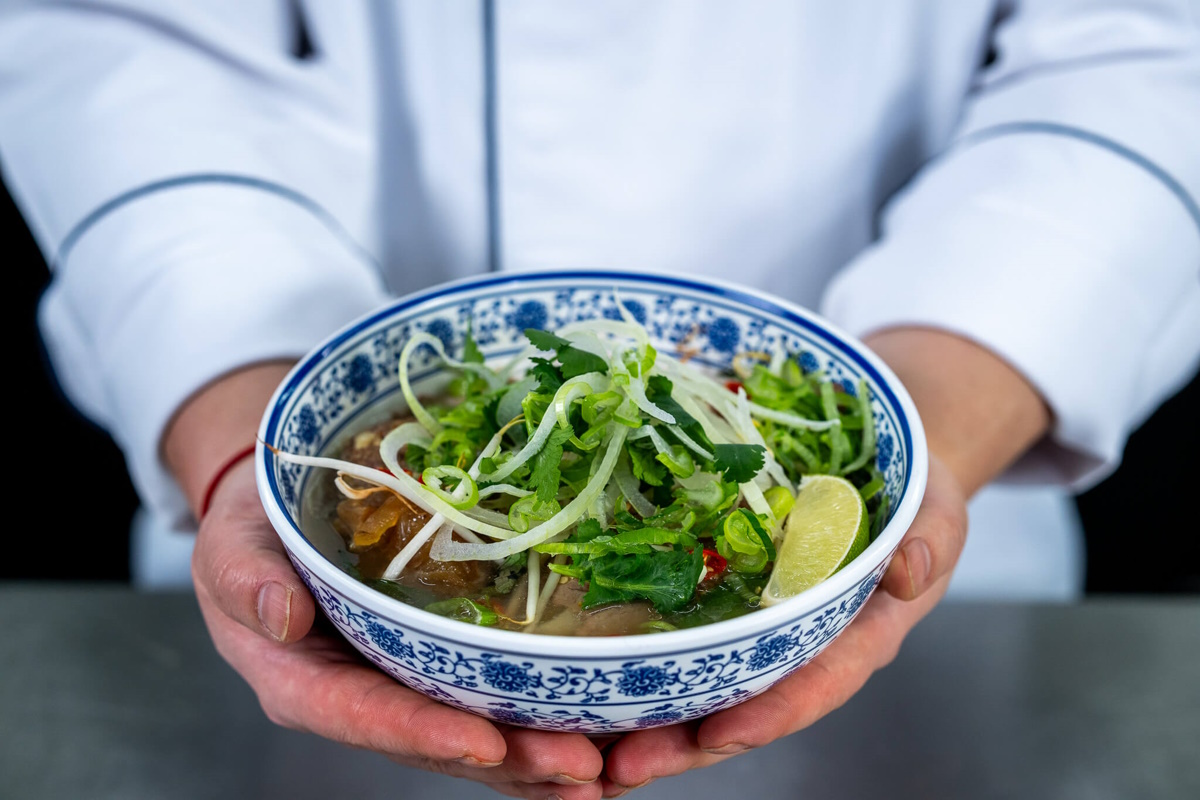
Image: RATIONAL AG
1) Pho & Co: Asian cuisine conquers the US
While Asian cuisine in the USA has long been limited to Chinese, Japanese and Thai restaurants, Americans are now increasingly craving flavors, ingredients and dishes from all over Asia, especially from countries such as Korea, Vietnam and the Philippines. The food service expert also sees Indian food becoming increasingly popular in the US, “in part because more and more executives, such as the CEO of Google, come from India, and a lot of company CEOs and CFOs also have Indian roots. These influences are making Indian food increasingly popular.” The National Restaurant Association predicts that social media and streaming services as well as Asian cooking shows and food documentaries will keep thisfood trend in the US growing in 2025. While Korean recipes such as kimchi and bibimbap often feature spicy or umami-rich flavors, Vietnamese dishes such as pho or mì quảng are particularly popular because they are lighter and include more vegetables.
2) Pickled and fermented
As Asian cuisines gain popularity in the USA, their fundamental techniques and ingredients are becoming increasingly important as well. The National Restaurant Association thus predicts fermented foods will make a major comeback. Originally developed as a way to preserve food, fermentation also enhances flavor and provides various health benefits. Fermented foods feature in many dishes, but they are particularly common in Asian cuisine. Kombucha, kimchi, tempeh, gochujang, and miso (a fermented paste of soybeans, grain, salt and koji mushrooms) are just a few examples of the fermented foods that give soups, sauces and dressings that unique umami note. This emerging trend aligns with another one: the rising popularity of Korean steakhouses. “These restaurants combine the higher end experience of a traditional steakhouse with the interactive experience of Korean barbecue, which incorporates a wide variety of condiments and side dishes – many of which are pickled and fermented,” explains Billy Buck, Vice President of Culinary with RATIONAL USA.
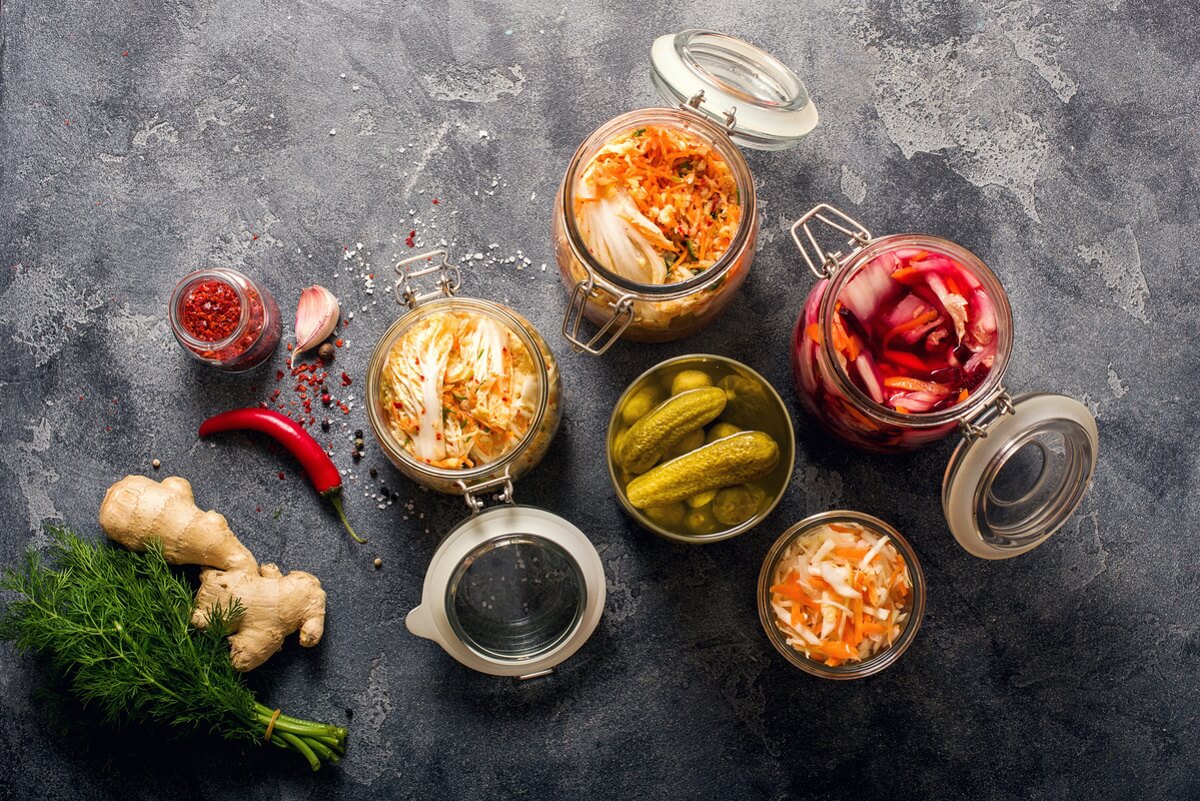
Image: AdobeStock
3) Value deals – more food for less money
Value meals or value deals – in other words, more food for less money – are another food trend in the US Andrew Fordyce is currently observing. “This is common in times of recession,” Fordyce says. “Companies try to lure in customers with deals, hoping that they’ll consume more – buy two or three drinks instead of just one, for example.”
The first value meals appeared in the mid-20th century, as a way for increasingly popular fast food chains to establish themselves as an affordable meal option. During the global financial crisis in 2008, consumers turned to more affordable options once again, and value meals experienced a revival. Today, value deals are common in supermarkets and convenience stores in addition to fast food restaurants. And the deals themselves have expanded beyond fast food products – they often include vegetarian or vegan options. In short, value meals are more than a marketing tool. They’re also a response to societal and economic changes that affect both how meals are consumed and what price point they are offered at. Even so, the fact that other food trends (e.g., global cuisine) are outperforming this one shows that people are still willing to pay if the food is worth it. “Value meals are certainly making a comeback in the United States,” says Jonathan Hunt, Vice President of Key Account Sales with RATIONAL USA. “McDonald’s bringing back its value meal menu is a reflection of where the market is right now and speaks to consumers wanting to get more for their money.”
4) Insects as a sustainable protein source: The new food trend in the US?
Andrew Fordyce believes that the trend towards edible insects is still in its infancy, at least in America. “Worldwide, about 2.8 billion people already eat insects, and as a source of protein, they are incredibly healthy and sustainable. There’s even a giant insect farm in Texas now.” The “gross” factor still creates hang-ups, though – particularly in the Western world. However, the food trend scout sees progress being made already. “Experiments have shown that ground insects, for example in a carrot cake, are very well received. This also proves that more people could accept insects as food if they’re in a less obvious form.” It’s important to remember, though, that these are still animals, so the methods used in breeding, feeding, and killing them still need to be taken into account.
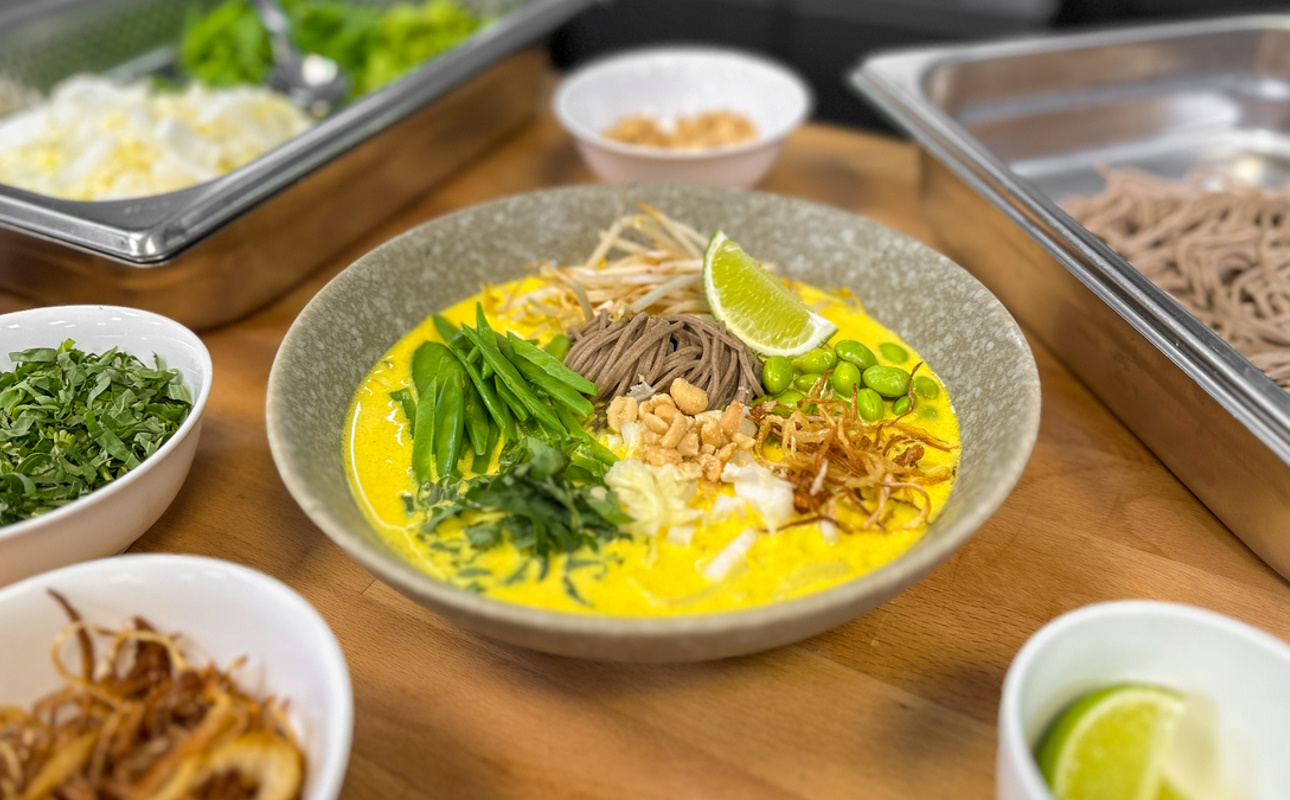
Image: RATIONAL AG
5) Increasing demand for sustainable concepts
But there’s no question that we need to change how we eat in order to protect the planet. Andrew Fordyce has noticed an increasing focus on this subject among US consumers as well: “Today, sustainability is one of the top topics in the hospitality industry. That wasn’t the case in America before.” According to Tastewise’s 2025’s Most Disruptive Food & Beverage Trends report, consumer interest in sustainable food and beverages has increased by 18.4% over the past two years. Sodexo’s Sustainable Food Barometer shows that 72% of Americans feel there is an urgent need to adopt more sustainable eating habits. That still puts America behind the other three countries considered in the study: Brazil (89%), France (82%), and England (73%). Even so, sustainability is considered one of the growing food trends in the US, and industry specialists expect restaurants that implement sustainability measures to enjoy increasing attention. As the Tastewise study shows, US consumers place particular emphasis on the CO₂ labeling of food, regenerative agriculture and soil quality, and transparency regarding food’s environmental impact. Around 55% of consumers are willing to shell out more money in response.
Other emerging trends
Hunt notes some additional trends to look out for in 2025.
- Healthy options – Consumers are wanting healthy menu options, but they also want to broaden their horizons beyond just salad. Many restaurants are beginning to offer everything bowls, a customizable all-in-one meal option that is customizable and perceived as a healthy alternative to sandwiches or burgers.
- Beverages – Tequila and mezcal continue to hold a prominent place on cocktail menus in the United States, and an increasing number of establishments are introducing or expanding their non-alcoholic (NA) beverage options. This is appealing to an increasing number of consumers, particularly for Generation Z as people in that generation are not consuming alcohol as frequently as older generations.
The former Business Development and Marketing Director has turned his passion for food into a profession. Today, he not only works as an independent food journalist, but also assists restaurateurs as a consultant and regularly brings products to market under the YUMMY trendfood & streetfood brand. Insect burgers and bites have been part of his product range for five years now. The South African native is particularly passionate about his international food trend tours, where he uncovers new and promising concepts and thus offers an exclusive inside look at the most innovative restaurants in the world. Together with Christoph Müller and Markus Zeller, he released The Leader of Managers, a book aimed at entrepreneurs, managers and students in the F&B industry.


